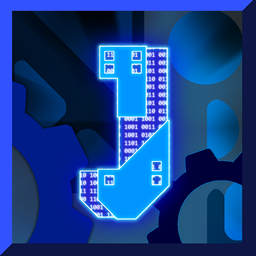#include <RotationJoint2D.hpp>
|
| | RotationJoint2D (World2D &worldRef, RigidBody2D &bodyA, RigidBody2D &bodyB, const bool collide, const glm::vec2 &localAnchorA=glm::vec2(0.f, 0.f)) |
| | RotationJoint2D constructor. More...
|
| |
| RotationJoint2D & | limit (const bool enable) |
| |
| RotationJoint2D & | setLimits (const float minAngle, const float maxAngle) |
| |
| std::pair< float, float > | getLimits () const |
| |
| | Joint2D (World2D &worldRef, RigidBody2D &bodyA, RigidBody2D &bodyB, const bool collide) |
| | Joint2D constructor. More...
|
| |
| virtual | ~Joint2D ()=0 |
| |
| unsigned int | getID () const |
| | Get joint ID. More...
|
| |
| Joint2D & | setID (const unsigned int id) |
| | Set new ID for the joint. More...
|
| |
Definition at line 38 of file RotationJoint2D.hpp.
| jop::RotationJoint2D::RotationJoint2D |
( |
World2D & |
worldRef, |
|
|
RigidBody2D & |
bodyA, |
|
|
RigidBody2D & |
bodyB, |
|
|
const bool |
collide, |
|
|
const glm::vec2 & |
localAnchorA = glm::vec2(0.f, 0.f) |
|
) |
| |
RotationJoint2D constructor.
Links the bodyB to a circular track around the bodyA. Movement area can be limited by radians.
- Parameters
-
| localAnchorA | Anchor point in the bodyA to start the connection from. Local coordinates: -1.f - +1.f. Default is center. Anchor point for bodyB can not changed. It is at the center of bodyB. |
| std::pair<float, float> jop::RotationJoint2D::getLimits |
( |
| ) |
const |
- Returns
- Returns current rotation limits in radians: first = minimum angle, second = maximum angle.
- Parameters
-
| enable | Enables/disables obeying rotation limits. |
- Returns
- Returns reference to self.
| RotationJoint2D& jop::RotationJoint2D::setLimits |
( |
const float |
minAngle, |
|
|
const float |
maxAngle |
|
) |
| |
- Parameters
-
| minAngle | Minimum angle of rotation in radians. |
| maxAngle | Maximum angle of rotation in radians. |
Enables limiting when called.
- Returns
- Returns reference to self.
The documentation for this class was generated from the following file:



 Public Member Functions inherited from jop::Joint2D
Public Member Functions inherited from jop::Joint2D Public Attributes inherited from jop::Joint2D
Public Attributes inherited from jop::Joint2D Static Protected Member Functions inherited from jop::Joint2D
Static Protected Member Functions inherited from jop::Joint2D Protected Attributes inherited from jop::Joint2D
Protected Attributes inherited from jop::Joint2D 1.8.11
1.8.11